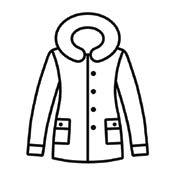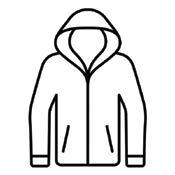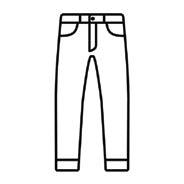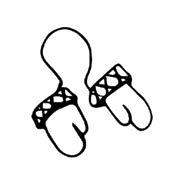Extension Activities

Level K Module 1
Lesson 5 Extension A | Weather
Working in pairs, students measure the various temperatures of the water in additional cups.
PREPARATION
Follow the instructions in Lesson 5 Resource D to set up two to four additional cups of water at various temperatures. Pour approximately 8 oz of water
into each of the insulated cups. Ensure that the temperature of the water does not exceed 110°F.
Distribute and read aloud the following procedure sheet to students. If using three or more cups, distribute two copies of the procedure sheet to each pair.
Measure Water Temperature
1. Draw the red lines.



2. Circle the color bands.
3. Share your findings with other students.
Working individually or in pairs, students identify clothing they would typically wear outside when the temperature is within each of the color bands. Students color the clothing the same color as the associated band on the thermometer (e.g., clothing that would be worn in warm band temperatures is colored yellow).
PREPARATION
None
Distribute and read aloud the following procedure sheet to students.
Match Clothing to Temperature




1. Color the clothing to match the color band.




2. Share your work with another student.

Read aloud If You Lived Here: Houses of the World by Giles Laroche. Working individually, students draw one of the homes they heard about in the text. Then students circle the parts of the home that protect people from weather.
PREPARATION
None

Distribute and read aloud the following procedure sheet to students.
Draw a Home
1. Draw a home.
2. Which parts protect people from weather? Circle.
3. Share your work with another student.
Lesson 15 Extension | Weather
Working in pairs, students use student thermometers to measure and compare temperatures inside and outside their shelter.
PREPARATION
Place students’ completed shelters outside in direct sunlight. Alternatively, secure and set up a
heat lamp over students’ shelters. Place a cup of water under the shelter and a cup of water outside the shelter.
Distribute and read aloud the following procedure sheet to students.
Test Shelters
1. Draw the red lines.




2. Circle the color bands.
3. Where is it warmer? Circle.
4. Share your findings with another pair.
Lesson 16 Extension | Weather

Students observe photographs of archaeologists working at dig sites around the world. Working individually, students draw tools archaeologists use as they make observations of the natural world.
PREPARATION
Prepare photographs of archaeologists using different tools, either on a computer or tablet or by printing out photographs for students to observe.
Distribute and read aloud the following procedure sheet to students.
Observe and Draw Tools
Archaeologists Use
1. Draw tools.
2. Share your work with another student.
Students vote as a class to research or investigate one unexplored question or related phenomenon from the module. With teacher support, students work in groups to perform research or carry out a simple investigation. Students then present their findings to the class.
PREPARATION
Prepare a list of unexplored questions and related phenomena from the module driving
question board. As necessary, curate resources for student research or provide materials and a procedure for a simple teacher-designed investigation. Prepare to review safety measures with students if necessary.
Write the appropriate activity name and procedure on a whiteboard or a sheet of chart paper, and read them aloud.
Research a Science Topic
1. Research the topic.
2. Get ready to present what you learned.
3. Share what you learned with the class. Carry Out an Investigation
1. Gather materials.
2. Carry out the investigation. Follow all safety rules.
3. Share what you learned with the class.
Lesson 3 Extension | Magnets
Working in groups, students arrange ceramic ring magnets on a pencil to make the magnets appear to float when the pencil is held upright.
PREPARATION
Provide each group with additional ceramic ring magnets so they have a total of three or four magnets.
Distribute and read aloud the following procedure sheet to students.
Make Magnets Seem to Float on a Pencil
1. Hold the pencil up. Slide the magnets onto the pencil. Add them one at a time. Magnets should not touch.
2. Share your findings with another group.
